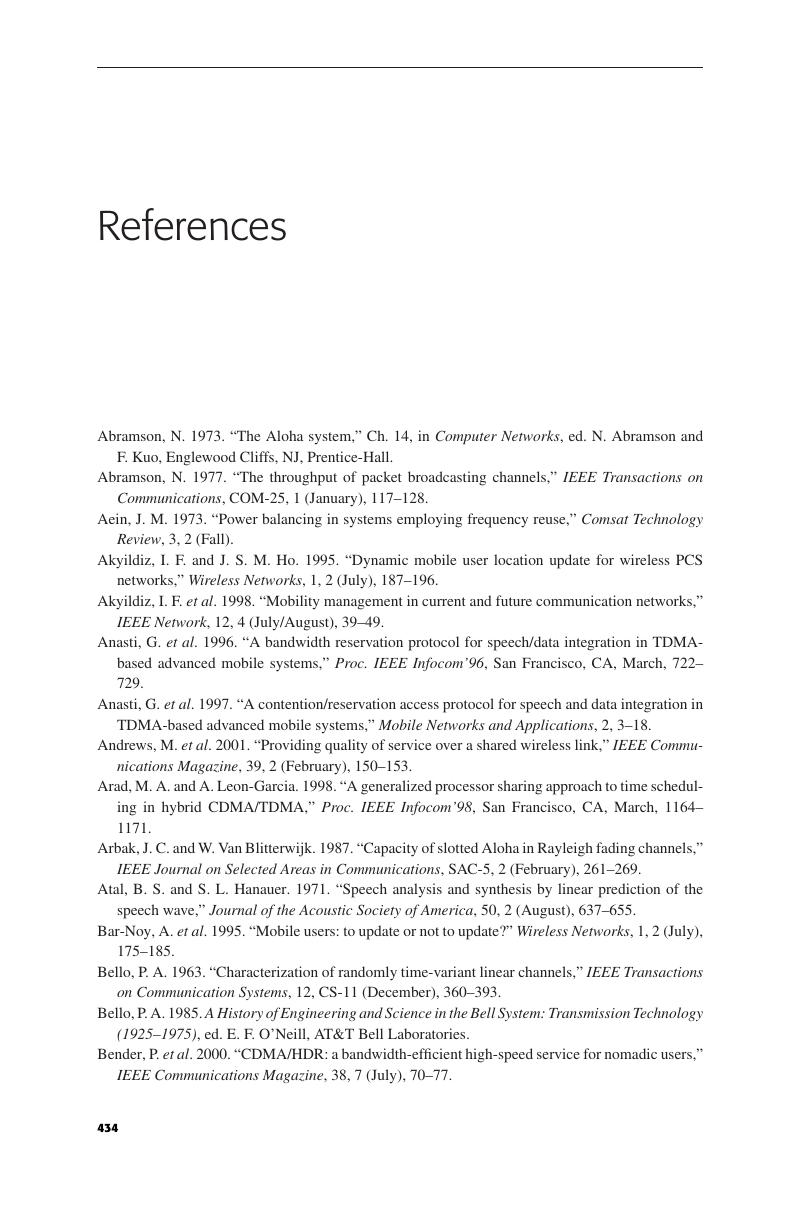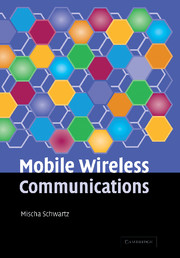Book contents
- Frontmatter
- Contents
- Preface
- 1 Introduction and overview
- 2 Characteristics of the mobile radio environment–propagation phenomena
- 3 Cellular concept and channel allocation
- 4 Dynamic channel allocation and power control
- 5 Modulation techniques
- 6 Multiple access techniques: FDMA, TDMA, CDMA; system capacity comparisons
- 7 Coding for error detection and correction
- 8 Second-generation, digital, wireless systems
- 9 Performance analysis: admission control and handoffs
- 10 2.5G/3G Mobile wireless systems: packet-switched data
- 11 Access and scheduling techniques in cellular systems
- 12 Wireless LANs and personal-area networks
- References
- Index
- References
References
Published online by Cambridge University Press: 05 June 2012
- Frontmatter
- Contents
- Preface
- 1 Introduction and overview
- 2 Characteristics of the mobile radio environment–propagation phenomena
- 3 Cellular concept and channel allocation
- 4 Dynamic channel allocation and power control
- 5 Modulation techniques
- 6 Multiple access techniques: FDMA, TDMA, CDMA; system capacity comparisons
- 7 Coding for error detection and correction
- 8 Second-generation, digital, wireless systems
- 9 Performance analysis: admission control and handoffs
- 10 2.5G/3G Mobile wireless systems: packet-switched data
- 11 Access and scheduling techniques in cellular systems
- 12 Wireless LANs and personal-area networks
- References
- Index
- References
Summary

- Type
- Chapter
- Information
- Mobile Wireless Communications , pp. 434 - 441Publisher: Cambridge University PressPrint publication year: 2004



